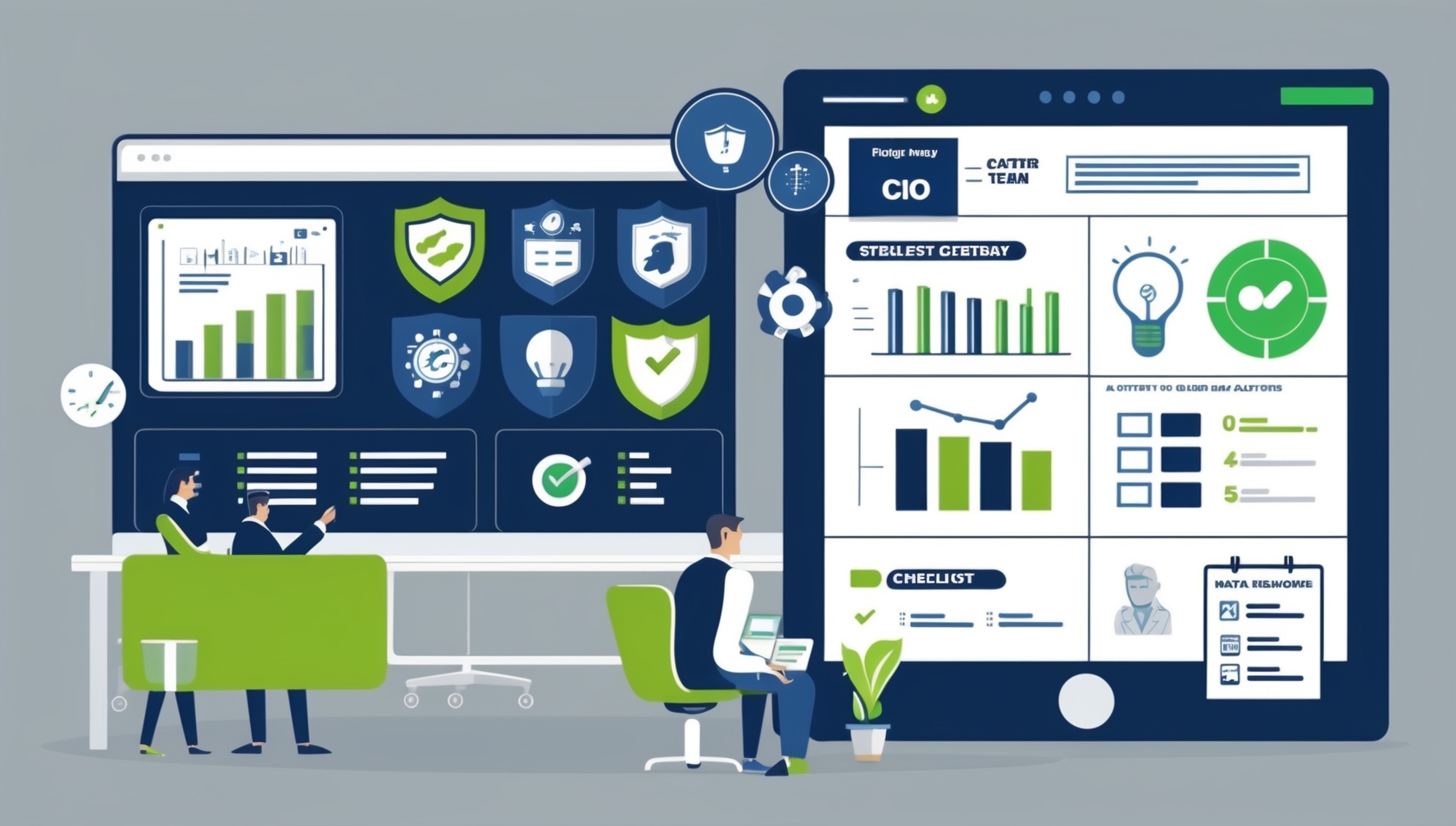Why does the CIO role fail to deliver IT Value? This research explores the relationship between the desired and implemented CIO role and responsibilities, how that impacts the value delivered by the IT Organization and recommends ways to mitigate the situation.
This analysis provides an in-depth examination of how the roles and responsibilities of Chief Information Officers (CIOs) are implemented across organizations. It assesses compliance with laws and guidelines, explores how organizations have integrated CIO roles into their operations and identifies key enablers and challenges CIOs face. This document includes findings from surveys and interviews with CIOs, offering insights into the effectiveness of CIO implementations and the impact on operations.
Implementing the Chief Information Officer (CIO) role is crucial in the intricate landscape of IT management. This analysis of the effectiveness of CIO roles in organizations delves into the dynamics of this critical position.
A primary concern in organizations is aligning the CIO's role with evolving laws and guidelines. Despite clear directives, agencies often face challenges in fully integrating CIO responsibilities, particularly in strategic planning, IT governance, and cybersecurity management. This gap can lead to inefficiencies, suboptimal IT investments, and increased vulnerability to cyber threats.
The complexity is heightened by the rapidly changing technology landscape and the increasing demand for digital transformation in government services. CIOs navigate a challenging environment where they must ensure compliance with regulations and drive innovation and digital modernization.
This analysis addresses these concerns by thoroughly examining how various organizations have implemented the CIO role. It includes insights from surveys and interviews with CIOs, offering a detailed view of the successes and obstacles in integrating CIO responsibilities effectively. The document explores how agencies have adapted to guidelines, the impact on IT management, and the challenges CIOs face in fulfilling their roles.
This report will help you think through the bigger question of why the CIO role fails to deliver value:
- What are the responsibilities of the CIO role?
- What responsibilities are implemented?
- Why does that matter, i.e., how does that impact the value CIOs deliver?
- What needs to change to empower CIOs?
- How will that improve the value delivered by the IT Organization?
For IT leaders and policymakers, this analysis serves as an essential resource. It provides a comprehensive understanding of the current state of CIO role implementation in organizations, offering lessons and strategies for enhancing the effectiveness of IT leadership. By learning from these insights, organizations can improve their approach to CIO integration, ensuring more effective IT governance, enhanced cybersecurity, and successful digital transformation initiatives.
Main Contents
- Assessment of CIO Role Compliance: Examination of how organizations comply with laws and guidelines in implementing the CIO role.
- Integration of CIO Responsibilities: Analysis of how agencies have integrated CIO responsibilities into their operations.
- Enablers and Challenges for CIOs: Identification of key factors that enable or challenge CIOs in fulfilling their responsibilities in organizations.
- Insights from CIO Surveys and Interviews: Compilation of findings from surveys and interviews with CIOs, providing real-world perspectives on the role's implementation.
- Impact on IT Management and Operations: Evaluation of the impact of CIO role implementation on IT management and operations within organizations.
Key Takeaways
- Varying Levels of CIO Role Integration: Recognizing that the integration of the CIO role varies across organizations, affecting the overall effectiveness of IT management.
- Critical Role of Compliance with Guidelines: Emphasizing the importance of adhering to laws and guidelines for effective CIO role implementation.
- Importance of Addressing CIO Challenges: Acknowledging the need to identify and address CIOs' unique challenges to enhance IT governance and cybersecurity.
- Value of CIO Insights for Policy Making: Highlighting how insights from CIO surveys and interviews can inform policy-making and improve the implementation of the CIO role.
- Strategic Impact of CIOs on Agency Operations: Stressing the strategic impact of effectively implemented CIO roles on enhancing IT operations and driving digital transformation in organizations.
CIOs can use this analysis on the effectiveness of CIO roles in organizations to address various challenges and enhance their strategic role:
- Guidance on Role Compliance and Integration: The document provides insights into aligning the CIO role with laws and guidelines. CIOs can use this information to ensure their role and responsibilities are compliant and effectively integrated into their organization’s operations.
- Understanding and Overcoming Challenges: By examining the identified enablers and challenges, CIOs can anticipate potential obstacles and develop strategies to overcome them, particularly in areas like IT governance and cybersecurity.
- Leveraging Peer Insights: The insights gathered from surveys and interviews with other CIOs offer valuable lessons that can be applied to their practices. These can include strategies for effective IT management, leadership, and digital transformation.
- Improving IT Management and Operations: The analysis of the impact of CIO role implementation on IT management and operations can guide CIOs in enhancing their IT strategies, ensuring that they contribute positively to their agency’s overall mission and objectives.
- Influencing Policy and Strategy Development: For CIOs in organizations, the document serves as a resource for understanding how their role can be shaped and evolved in line with policy developments, helping them to be proactive in strategy development and implementation.
In essence, this analysis serves as a valuable tool for CIOs in understanding the complexities and dynamics of their role, offering guidance on enhancing their effectiveness in aligning IT initiatives with broader organizational goals. You will learn about the CIO role and its responsibilities. Still, this discussion is less about those specifics and more about their impact on the success or failure of the objectives set for the IT Organization.

